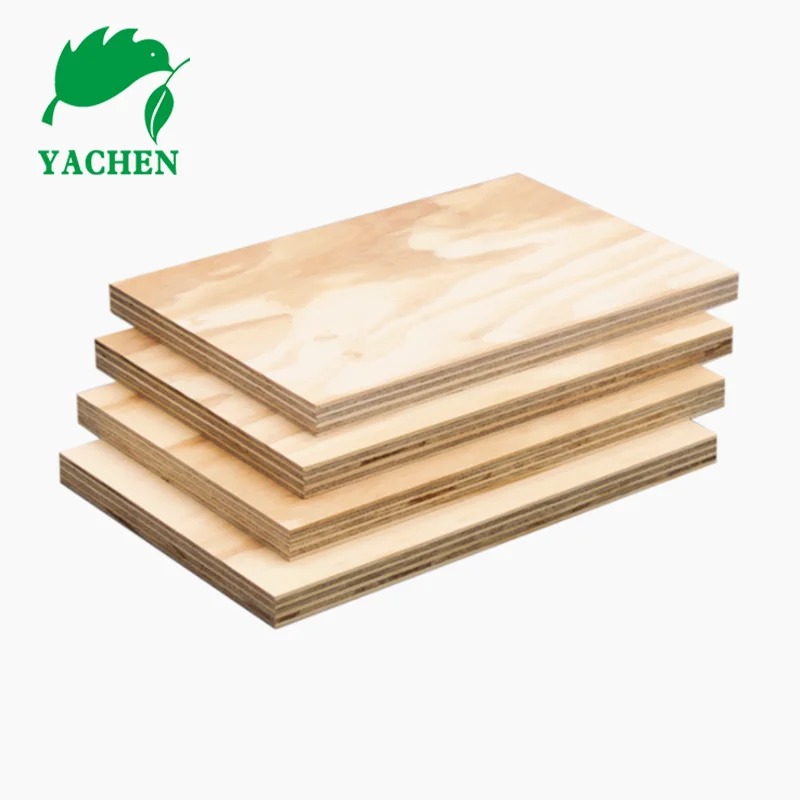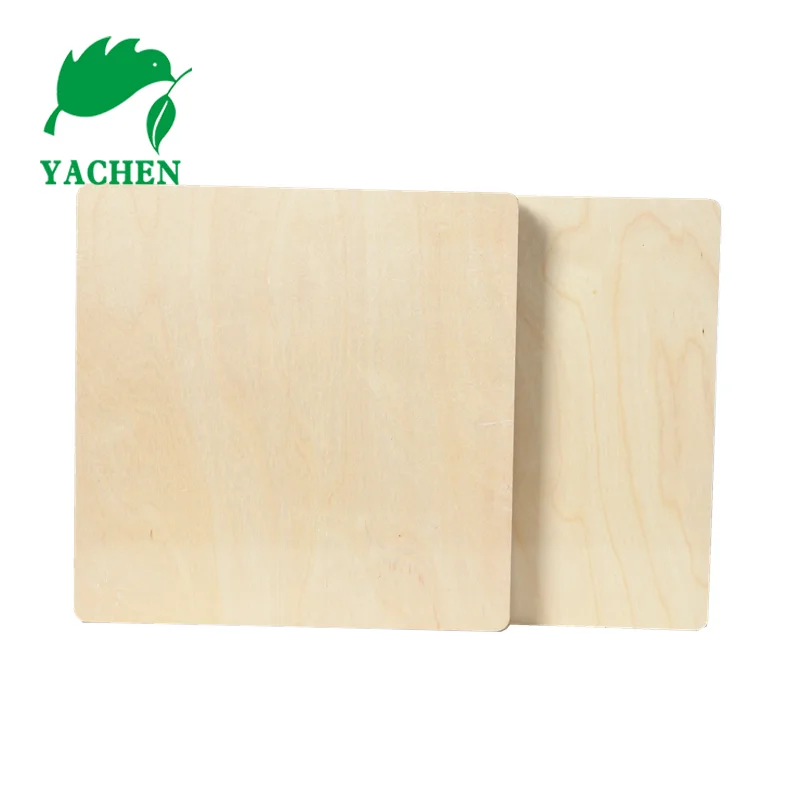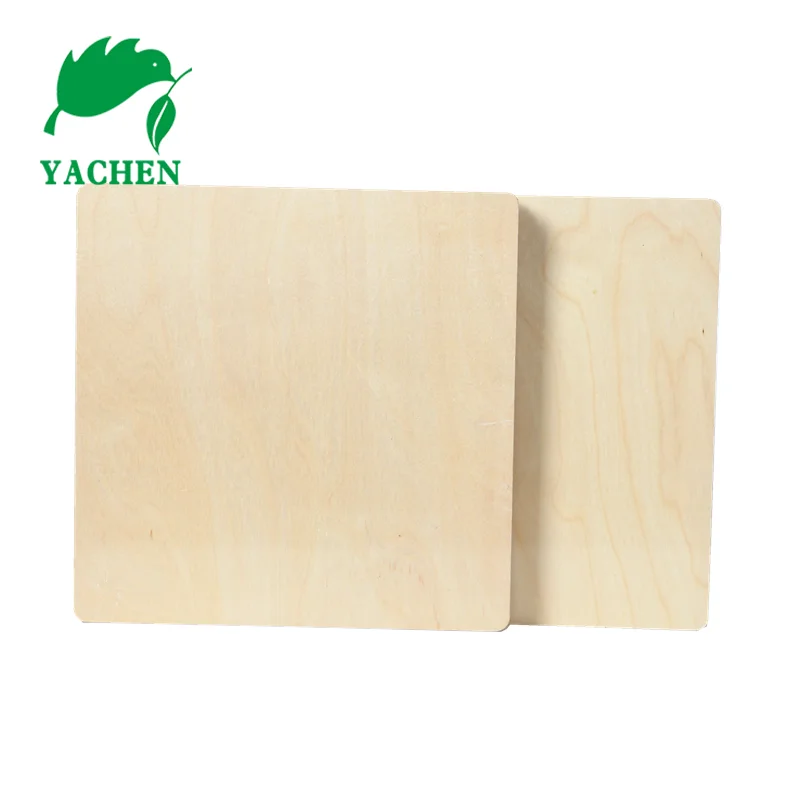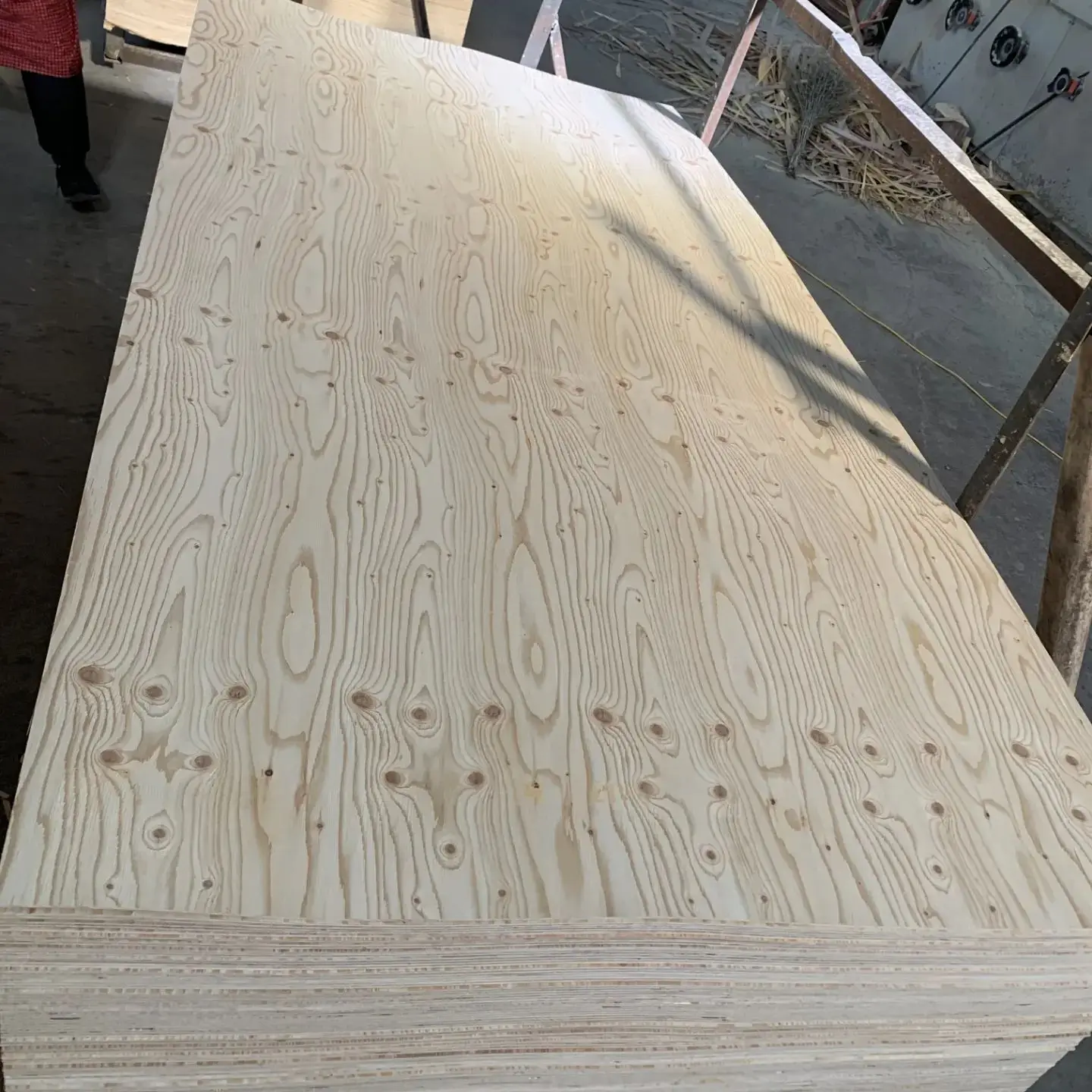Pine plywood is a common construction and furniture material made from multiple layers of thin wood chips bonded with glue. The following is an introduction to the production and use of pine plywood.

Production process:
Choose high-quality pine wood: Pine wood is widely used in the making of plywood because of its good strength and durability.
Cutting wood chips: The raw pine wood is first sawn into thin and uniform wood chips, usually between 2 and 4 mm thick.
Drying wood chips: Wood chips need to be dried to remove moisture from them, which can be done by air drying or using drying equipment.
Next, apply glue to the dry wood pieces and stick them together layer by layer. The grain directions of the wood chips in each layer are usually perpendicular to each other to increase the strength of the plywood.
Cutting and Trimming: Once the plywood has been cured, it will be cut to the desired size and shape. Trimming is then performed to ensure that the edges of the board are straight and smooth.
The glued wood pieces are slowly put through a series of pressure and heat to fully cure the glue and strengthen the structure of the board.

Introduction to use:
Construction industry: Pine plywood is widely used in the construction field for floors, partitions and roof structures. Its rugged properties allow it to withstand heavy pressure and various external environmental conditions.
Furniture Manufacturing: Pine plywood is widely used to make furniture, including tables, chairs, cabinets, etc. Its flat surface and strong properties make it the material of choice for furniture manufacturers.
Decorative applications: Pine plywood can be decorated by spray painting, stickers, polishing, etc. to obtain a variety of appearance effects.
Disassembly and reuse: The structure of pine plywood makes it easy to disassemble and reuse, which is very useful in some environments where the layout needs to be changed frequently.
When using pine plywood, there are some precautions that need to be followed to ensure its proper installation and use. Here are some things to note when using pine plywood:
Avoid moisture: Pine plywood is sensitive to moisture, so prolonged exposure to moisture needs to be avoided. Ensure that pine plywood is given adequate drying time before installation to reduce the possibility of moisture absorption.
Prevent moisture contact: Try to avoid exposing pine plywood to direct water contact. If used in high-humidity areas such as kitchens or bathrooms, it is recommended to carry out appropriate waterproofing treatments.

Regular Maintenance: To keep pine plywood in good condition, regular cleaning and maintenance is recommended. Use a mild detergent and a soft cloth to clean, and avoid using abrasive materials or chemical cleaners that can scratch or damage the surface.
Avoid overloading: Pine plywood has a certain strength and load-bearing capacity, but make sure you don’t use it beyond its capacity. Properly distribute weight and avoid overloading to extend the life of pine plywood.
Ensure a safe installation: When installing pine plywood, be sure to choose the appropriate installation methods and accessories to keep it secure and secure. Follow the installation guidelines and steps provided by the manufacturer, or have it installed by a professional.
Fire protection note: Pine plywood has certain flame retardant properties, but it is not a fire-resistant material. Pay attention to fire safety when using pine plywood and avoid contact with open flames or high temperatures.
Pay attention to environmental protection: Pine wood is a natural resource. In order to protect the environment and sustainable development, it is recommended to choose pine plywood that meets environmental protection standards and comply with local environmental protection regulations.

Overall, pine plywood is a versatile material with good strength and durability. Whether used in construction or furniture manufacturing, pine plywood is a reliable choice. It can meet various usage needs through reasonable production technology, and is environmentally friendly and sustainable.

